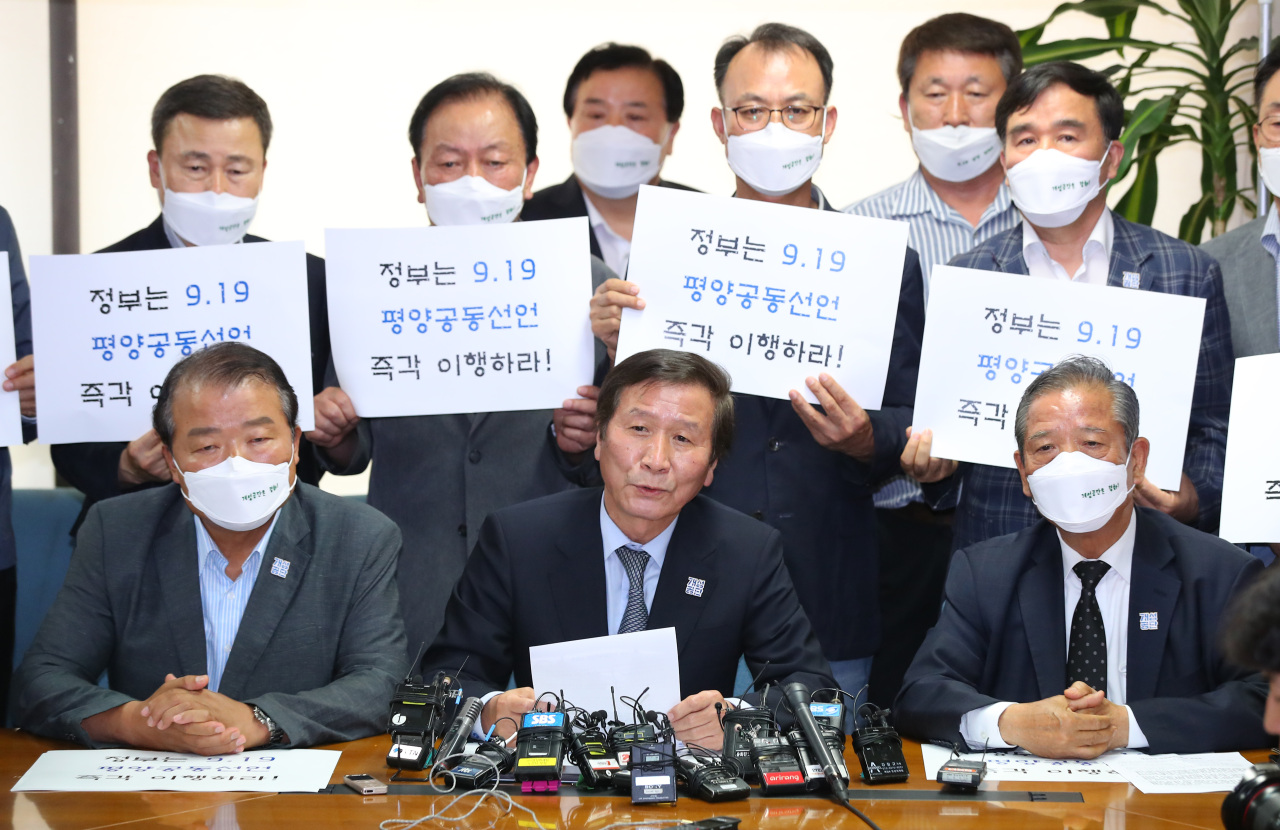[Newsmaker] ‘Our worst fear has turned into reality’
Kaesong tenant companies in despair as bets on peninsular detente turn into massive losses
By Ahn Sung-miPublished : June 17, 2020 - 16:12

Tuesday was a devastating day for a group of South Korean businessmen who once ran factories inside the Kaesong industrial park, a now-shuttered joint manufacturing zone in North Korea’s border city. When Pyongyang blew up the inter-Korean liaison office there, it shattered their last hope of a dramatic breakthrough in cross-border ties that would have allowed their factories to resume operation.
“This is tragic. We are devastated that our worst fear has come true,” Chung Ki-sub, chairman of the Corporate Association of Kaesong Industrial Complex, which represents 123 South Korean companies with factories in the complex, told The Korea Herald. “Reviving the complex now would be extremely difficult, and a complete shutdown could happen.”
Now in ruins, the liaison office was established in September 2018 during a detente phase in inter-Korean relations. The explosion is seen as the first of many steps that Pyongyang will probably take to pressure Seoul, and ultimately the US. Its hostile words have escalated since last week over Seoul’s failure to prevent defector groups from sending anti-North leaflets across the border.
On Wednesday, the North warned that it would redeploy troops to the joint industrial park, which was once a military zone, as well as to the Kumgangsan tourist zone on the east coast. It also said it would reinstall guard posts previously removed from the Demilitarized Zone separating the two Koreas, and resume “all kinds of regular military exercises.”
Experts say the destruction of the liaison office illustrates the North’s frustration with the Moon administration’s lack of progress, and that we should expect the complete shutdown of the industrial park.
“With the current (Moon) administration not able to offer a solution to resume (operations at) the Kaesong industrial park, the North had no desire to leave the complex ‘abandoned and useless,’” said Cheong Seong-chang, director of the Center for North Korean Studies at the Sejong Institute. “North Korea is working toward remilitarization of the complex, and it is projected that the complete shutdown will follow.”
“While the anti-North leaflets had sparked the situation, the government’s failure to implement the April 27 Panmunjom Declaration and Sept. 19 Pyongyang Joint Declaration caused the outbreak,” Chung told reporters at a press conference held after the emergency meeting of the association.
“With none of the agreements executed, (the North) had lost trust on the South and was furious, and the leaflets added fuel to the situation. In order to prevent collision between the two Koreas and to gain support from the international society, the government should boldly execute all the substances from the agreements, including the Kaesong industrial park, Kumgangsan tourism project and connecting inter-Korean railways and roads.”
“The US put the brakes on inter-Korean cooperation via the South Korea-US working group which also caused the current situation,” he said. “For peace on the Korean Peninsula which is on the verge of total crisis, the US needs to respect and support talks and cooperation between the two Koreas.
For about a decade after its establishment in 2004, the jointly run park bustled with economic activities and was hailed as a symbol of cooperation between the rival Koreas. Hundreds of small and medium-sized South Korean companies employed around 55,000 North Korean workers there. It was an important source of revenue for the North, but was also suspected to be a source of hard currency for the North’s nuclear program.
In 2016, the South Korean government closed down the complex in retaliation for the North’s nuclear tests and missile launches.
When the South Korean companies were forced to withdraw, they left all their facilities and factories behind, hoping the shutdown was temporary.
According to the Corporate Association of Kaesong Industrial Complex, investors’ assets at the complex are worth around 900 billion won ($740.30 million). When their total investments are considered, the companies say the shutdown cost them more than 1 trillion won.
By Ahn Sung-mi (sahn@heraldcorp.com)
Chronology of major events regarding Kaesong industrial park
December 2004
Factories begin operation
December 2007
Construction completed for office for inter-Korean cooperation and consultations
Feb. 10, 2016
South’s government announces closure to retaliate for North’s missile tests
April 27, 2018
Leaders of both Koreas make joint statement after summit that includes plans for a liaison office in Kaesong
Sept. 14, 2018
Building designated for inter-Korean cooperation and consultations renovated as liaison office
March 22, 2020
Kim Yo-jong, sister of Kim Jong-un, threatens to shut down liaison office and completely demolish Kaesong park
June 13
Kim Yo-jong speaks of plans to blow up liaison office
June 16
North Korea blows up liaison office












![[Today’s K-pop] BTS pop-up event to come to Seoul](http://res.heraldm.com/phpwas/restmb_idxmake.php?idx=644&simg=/content/image/2024/04/17/20240417050734_0.jpg&u=)





![[KH Explains] Hyundai's full hybrid edge to pay off amid slow transition to pure EVs](http://res.heraldm.com/phpwas/restmb_idxmake.php?idx=652&simg=/content/image/2024/04/18/20240418050645_0.jpg&u=20240419100350)

![[Today’s K-pop] Zico drops snippet of collaboration with Jennie](http://res.heraldm.com/phpwas/restmb_idxmake.php?idx=642&simg=/content/image/2024/04/18/20240418050702_0.jpg&u=)